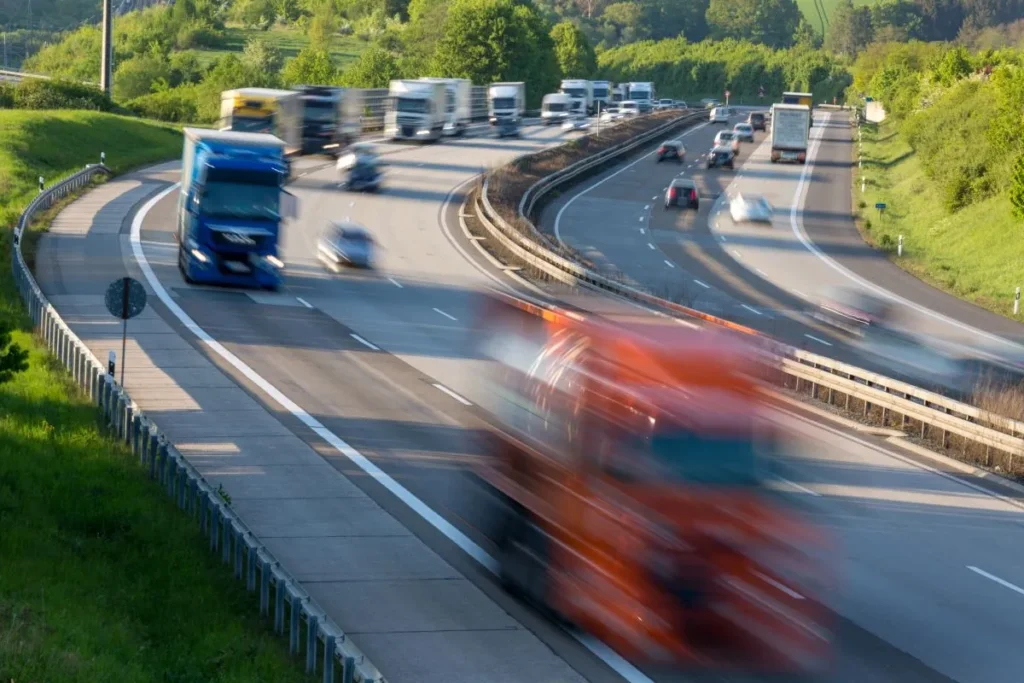Last Sunday, in an interview for French BFM TV, François De Rugy presented plans to introduce a vignette for foreign trucks in France. In this way, carriers from abroad would contribute to expenses for the construction and modernization of infrastructure. The minister’s controversial statement opened a Pandora’s box.
We work, like other countries in Europe, on a form of vignette to allow some taxation of foreign trucks that are currently passing through France. There are those that have not even filled up their tanks, so they do not pay taxes on fuel and do not pay for road wear,” said the minister.
If everything goes as planned, the vignette will be introduced as early as in 2019.
There are a lot of voices supporting such a solution. French MEP Karima Delli claims that the problem also applies to French carriers who are burdened with tax obligations. Delli claims that foreign trucks cannot be taxed in any other way than a vignette because they are not registered in France.
French vignette or European toll
In turn, Christine Revault d’Allonnes-Bonnefoy, the European MEP representing the party of the French Socialists in the European Parliament, argues that the proposed tax would be only a temporary measure because the revision of the Eurovignette Directive is under preparation. It assumes a ban on local mini-taxes of this kind, in exchange for a universal European toll.
Using the vignette, you use the road network as much as you want. There is no difference in price between users who pollute more and those pollute less. What we are working on at the European level is the full application of the “user pays” and “polluter pays” principles. MEPs have accepted my proposal to replace vignettes with tolls for all heavy vehicles – including buses – from 2023 on the whole Trans-European road network,” writes d’Allonnes-Bonnefoy on her website.
According to MEP, this fee will also apply to vans carrying goods.
Rates will vary depending on the environmental impact. The truck will pay less if it emits less exhaust. In the case of light vehicles, the tariff will be reduced by 75 percent,” added MEP.
Christine Revault d’Allonnes-Bonnefoy was surprised by the very proposal of the minister, which would indicate a lack of awareness of what is happening in the European Parliament – reports the portal Franceinfo. In turn, the Minister claims that the vignette is not intended to tax vehicles that pollute the air the most, as would be the case with the fee proposed by d’Allonnes-Bonnefoy, only those who use the infrastructure in France without paying taxes. The minister also wants to unambiguously separate himself from the proposal of ecotax, which caused a storm among trade unionists. Even so, the very fact that the idea came out from the minister for ecology gave the opponents of the vignette reasons to suspect that this is a kind of ecotax, only introduced under a different name.
French carriers are sounding alarm
Jean-Marc Rivera, secretary general of the Organization of European Carriers (OTRE) is strongly opposed to the introduction of a vignette for all trucks. As he claims, European law does not allow the taxation of foreign lorries only, and therefore the vignette would also apply to French carriers.
We note that the Minister of Ecology is taking part in the discussion. (…) The only contact we had with government representatives in this matter was with the Minister of Transport. We see that this is now the Minister for Environmental Change. We want to close this topic right away, because this is another move that has nothing to do with ecology, but is an attempt to introduce another tax, as it was in the case of ecotax – said Rivera in an interview for Franceinfo television channel.
OTRE press release also indicates that out of the EUR 39 billion that road users in France paid in the form of tax (not including toll motorways), only 13.3 billion were spent on the expansion and modernization of infrastructure.
Photo: Wikimedia Commons/ CC BY-SA 3.0









